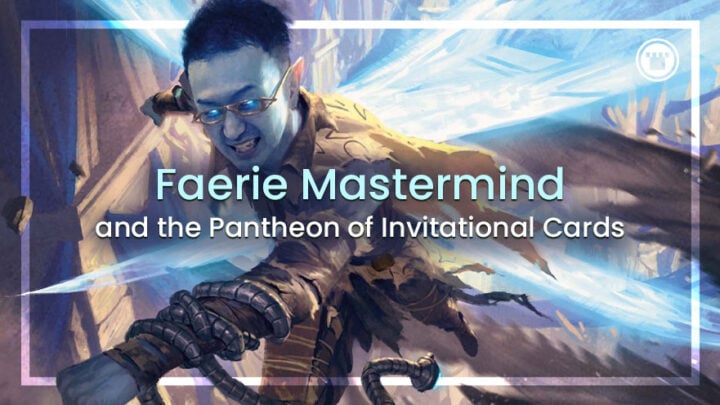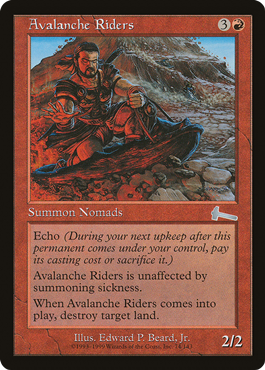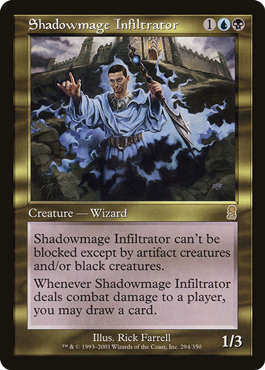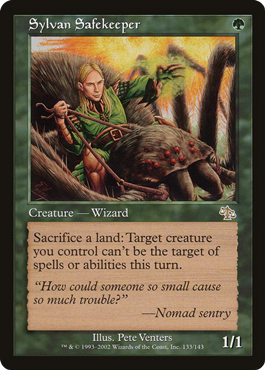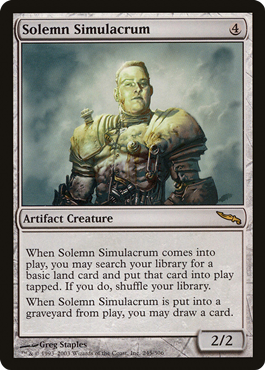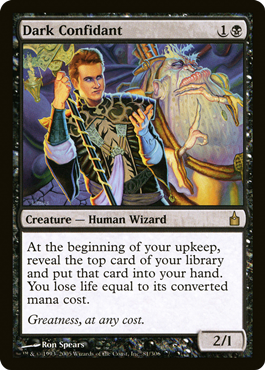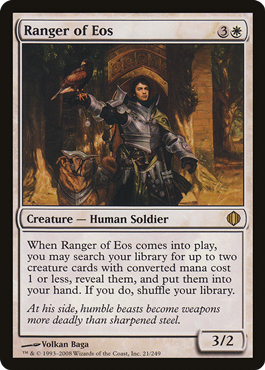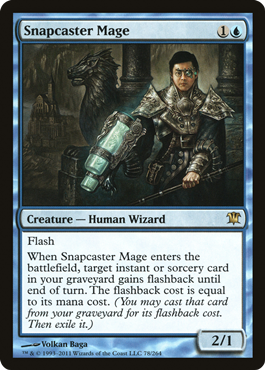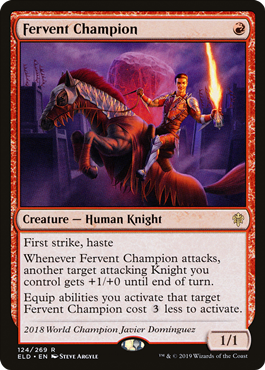With the recent sneak peek at March of the Machine, one particular card stood out a bit to me. All right, a lot of cards stood out for a lot of reasons, but Faerie Mastermind caught my eye because it’s an Invitational card.

Invitational cards have been a part of the game since near the dawn of Organized Play, and though they went away for a bit in the 2000’s, they came back a few years ago. Essentially, if you win Worlds, you get to help design a card (which, up to this point, have all been creatures even if I don’t think there’s a rule stating it must be a creature).
The art in the first printing of that card is modeled after the player, and since Yuta Takahashi won Worlds back during the 2020-2021 season, his card will be appearing in early 2023. Takahashi’s card is the third Invitational card of this reemergence, and I’m very glad they’re back.
So, with this history of Invitational Cards to look back on, where does Faerie Mastermind rank? How does it stack up to what has come before? First, let’s look at the card on its own.
A two-mana 2/1 with Flash and Flying is already right in Blue’s wheelhouse, and it would be a pretty high pick in Limited for any given set already. It’s not color intensive, so it isn’t hard to play in multicolor decks — another point in its favor.
Flash works particularly well with its static ability, drawing you a card whenever an opponent draws their second card for the turn. Playing this in response to an opponent’s draw spell is a way to eke out a good amount of value, and in general the ability helps you keep pace with an opponent who is churning through their deck.
Its activated ability probably won’t come up much in 1-vs-1 Magic, but in Commander? This now slots into a lot of decks as either a group-hug piece (that will usually draw you far more cards than your opponents, as activating this on their turns will net you two cards per activation) or a political negotiation piece.
I can definitely see this card finding homes in multiple formats. It does enough in Standard to see play as an early drop in control or tempo decks. In other formats, its power level and utility scales up as you expand the card pool, as cantrips and draw spells become cheaper and more plentiful.
Takahashi knocked it out of the park with the design of this card if he was looking for it to have an impact on the game. But, with that in mind, how does it compare to other Invitational cards?
Darwin Kastle — Avalanche Riders (Urza’s Legacy)
Avalanche Riders was the first printed Invitational card (although not the first one won — more on that later), and while it might not have stuck around in competitive Eternal formats, it’s become a Cube staple and always seems to do a little more than it should when played.
And yet, it had the misfortune to get saddled with a set mechanic back when downside mechanics were still a thing. Echo makes this card incredibly awkward to play, often limiting this to a one-turn ambush that hopefully sets your opponent back enough to let you press the advantage in subsequent turns.
Faerie Mastermind gets the edge here. I have a soft spot for the Riders, but I think Mastermind has a better shot at lasting competitive impact.
Mike Long — Rootwater Thief (Nemesis)
Rootwater Thief is almost close to a playable card, but just slightly misses the mark in so many ways. The casting cost is fine at one-and-a-blue, but the 1/2 body is underwhelming.
The fact that you have to pay a blue to activate flying and then an additional two mana for the effect means if you spend time trying to get this to work as soon as you can, you aren’t developing the rest of your board at all for a while. And while the effect is neat and can potentially ruin a combo deck’s day, it’s not affecting the board or the other player’s hand.
It is a neat effect, just too slow on its own to swing a game except in extremely specific circumstances. Mastermind wipes the floor with the Thief, no contest.
Chris Pikula — Meddling Mage (Planeshift)
Now THIS is a card. It does one thing but does it as good as it can possibly be done — so much so that this still shows up in sideboards to combat a wide swath of combo decks in various formats (it’s been reprinted a time or two, meaning it is indeed Modern-legal).
A 2/2 for two colored mana isn’t the most aggressive body, but it serves its purpose perfectly fine, while still being small enough to feel fair. Mage puts up a good fight, but its status as a sideboard staple means Mastermind just wins, as I’m betting that Mastermind stays in main decks for a long time to come.
Jon FInkel — Shadowmage Infiltrator (Odyssey)
Shadowmage Infiltrator feels like it should be better than it ended up being. Fear (which is what that evasion ability would become) is an effective tool, and the Curiosity-like effect is a good one. So why hasn’t this card stuck around?
Well, Fear is effective…most of the time. But if your opponent is playing any black or artifact creatures at all, the 1/3 body on the Infiltrator likely isn’t going to be enough to punch through. And if it’s relegated to defense, there’s a lot more you can be getting for three mana across two colors.
It’s closer than it looks, but Shadowmage can’t quite compete with the Faerie flier.
Olle Rade — Sylvan Safekeeper (Judgment)
Here’s the thing: I really like Sylvan Safekeeper. It’s tricksy in an interesting way and enables a bunch of Life From the Loam shenanigans. But outside of the occasional Legacy or dedicated Lands deck in Commander appearance, the Safekeeper doesn’t see a ton of play anymore.
There is a nifty bit of trivia associated with it, though. Olle Rade won the first Worlds for which players got an Invitational card as a reward, but he took a break from Magic shortly thereafter — submitting a joke design that was politely rejected. He came back to the game a few years later and asked if he could still get a card, the result of which was Sylvan Safekeeper.
I think Safekeeper has a lot to offer, but it’s limited to a specific style of play. Mastermind wins here based on how well it can fit into a lot of different strategies.
Kai Budde — Voidmage Prodigy (Onslaught)
Voidmage Prodigy does something undeniably powerful, but at a high cost. It did make a splash back in its day, but it hasn’t remained in the older competitive formats. That said, it can be extremely backbreaking in Commander in Changeling or Wizard-themed decks, where it can essentially lock an opponent or two out of the game with the proper resources.
The Prodigy is a little too reliant on synergy with other cards to be a true heavy-hitter, though, where Mastermind can have a huge impact all on its own.
Jens Thoren — Solemn Simulacrum (Mirrodin)
For a long, long time, Solemn Simulacrum was the poster child for Commander. It could go in any deck and give you value on the way in and on the way out. Times have changed a bit, and the format has evolved, but anyone who played Commander before 2017 or so most likely still has a soft spot for the Sad Robot.
This is honestly close. The only thing that gives Mastermind the edge is its casting cost. If Solemn had the same effect but cost one or two mana less, I could still see it play in older formats to this day.
Bob Maher — Dark Confidant (Ravnica: City of Guilds)
Dark Confidant was, for a long time, the hands-down winner of the most powerful Invitational card. Providing a decently aggressive body and early card advantage, Dark Confidant was played everywhere.
Only in the past few years has Bob (as the card is affectionately known) been getting edged out of more competitive play as the general card quality of each format creeps up. But he will still pop up every now and then, as his raw power cannot be denied.
Faerie Mastermind allows for similar card advantage as Dark Confidant, but without the possibility of killing yourself. Greatness at any cost indeed, but nowadays you don’t have to hit yourself to get there.
Terry Soh — Rakdos Augermage (Dissension)
Poor Rakdos Augurmage had the misfortune, as we’ve seen with a few of these so far, of being too closely tied to a set mechanic. In this case, Hellbent is the culprit.
Rakdos Augermage works great if you have no cards in hand. But if you do, it gives your opponent way too much power in the exchange. It’s also a bit at odds with itself; a 3/2 first striker is a creature you want to be attacking with, so holding it back to activate its ability isn’t often something you’ll want to do.
Add in a very color-intensive mana cost, and Rakdos Augermage just has too much going against it. I mean, sorry Rakdos fans, but Augermage is just not a great card to begin with. Faerie takes it in a clean sweep.
Antoine Ruel — Ranger of Eos (Shards of Alara)
Ranger of Eos goes in very specific types of decks, but in those decks it’s an all-star. Being able to find specific, one-mana creatures is more useful than you might think, especially in decks like Soul Sisters or anything running Viscera Seer.
At four mana, Ranger doesn’t see a ton of play outside of those kinds of decks, but it still shows up every now and then.
This is an odd one to compare. Ranger demands a deck built in a specific way to be amazing, whereas the floor on Mastermind is high no matter what the rest of your deck looks like. Ranger has a potentially higher ceiling, but Faerie will be more impactful overall.
Tiago Chan — Snapcaster Mage (Innistrad)
This card was the only card for a long time that could rival Dark Confidant in power, seeing play in every possible format and changing the way control decks played everywhere.
While very good in its Standard environment, Snapcaster’s ability only gets better as you expand the pool of cards it can play with — flashing back a Lightning bolt has ended countless games over the years. It’s fallen off a bit as the power level of all formats have crept up, but it still sees play in tempo and control builds.
This is probably the closest direct comparison, and all I think it comes down to is that Mastermind has flying and more utility in Commander. Both of those factors push it over the edge, and I think it will have a similar long-lasting impact across formats.
Javier Dominguez — Fervent Champion (Throne of Eldraine)
Fervent Champion is a great card that is even better in multiples that runs into a simple problem — one-drops exist in a very competitive slot for a red creature, with card like Goblin Guide and Monastery Swiftspear having carved out their spots in burn decks long before the Champion came on the scene.
The first strike is very nice, but there’s just enough better options out there to keep this from breaking through into older formats. Mastermind, I fully believe, will break through into older formats, which is why it gets the nod here over the champion.
Paulo Vitor Damo de Rosa — Elite Spellbinder (Strixhaven)
Elite Spellbinder is a doozy, providing a hard-hitting, evasive body with an enters-the-battlefield effect that can really ruin your opponent’s plans. It still shows in older formats in Death and Taxes-style decks, where it gives them a better game against combo and control.
This is very close. Both cards have evasion and provide card advantage, with Spellbinder having the added bonus of giving you a lot of information. Mastermind having Flash gives it a little more utility, and I do think it fits into more decks a little more easily, but I could see an argument either way.
The Place in the Pantheon
If you’ve been keeping track, all this means I’m betting hard on Faerie Mastermind being probably the best Invitational Card we’ve seen yet. There are certainly arguments to be made for some of the others, but I’m comfortable calling my shot: we’ll be enjoying Takahashi’s face for a long, long time.

Chris is the Marketing Communications Coordinator (and editor of the blog) at Card Kingdom. He would like to apologize to his son for not holding onto more cards from when he first started playing, as that likely would have paid for college. He enjoys pretty much all formats of Magic, but usually ends up playing decks that make other people dislike playing those formats with him.

